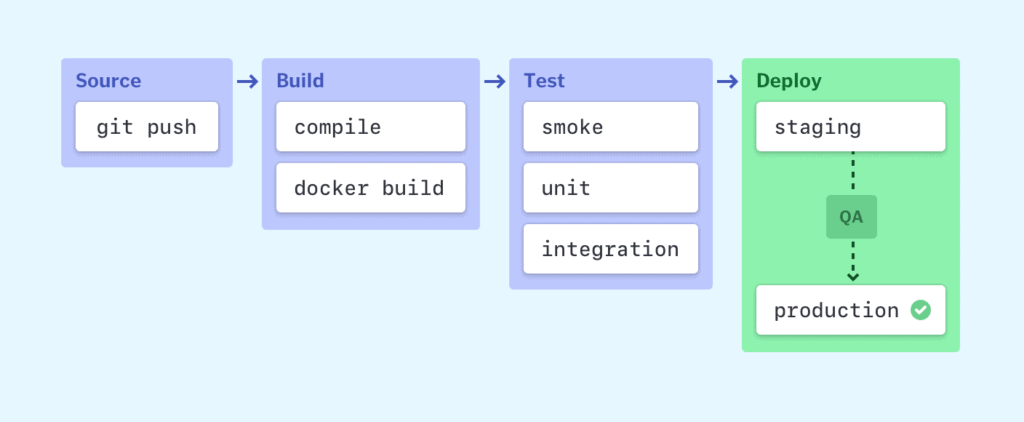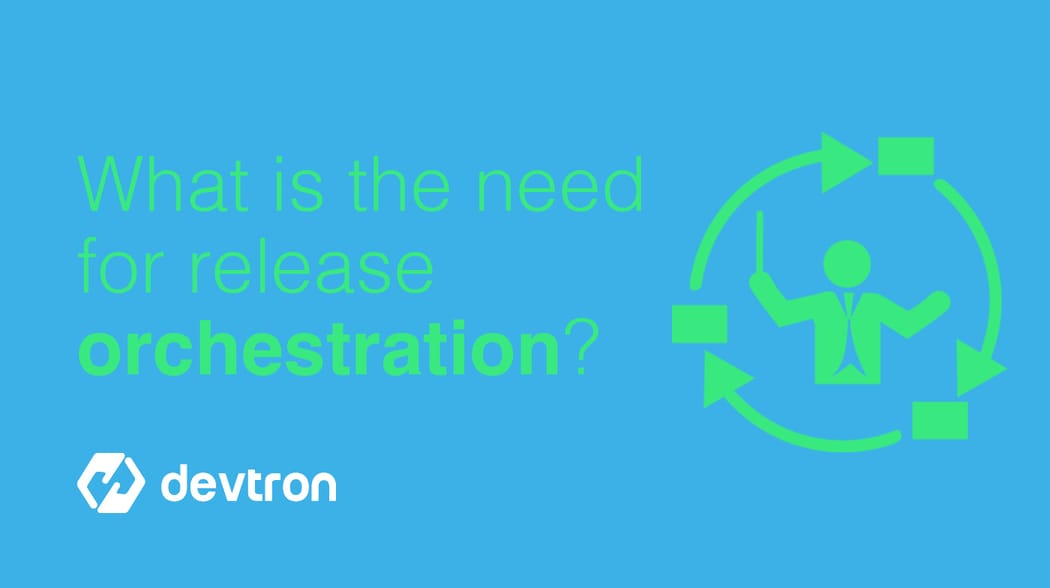DevOps is a software development approach that enables the development, testing, integration, deployment, and monitoring of the software in a continuous manner throughout the software development lifecycle. CI/CD is the backbone of the modern DevOps environment.

What is Continuous Integration (CI)?
- It is a software development practice where you can regularly merge your code changes in a central repository, after which automated builds and tests are run.
- With CI, you can frequently commit to a shared repository using a version control system such as Git.
- A CI service automatically builds and runs unit tests on the new code changes to immediately surface any errors. Every revision that is committed, triggers an automated build and test.
What is Continuous Delivery (CD)?
- The goal of CD is to enable a constant flow of changes into production via an automated software production line. With Continuous Delivery, you can automate the entire software release process.
- CD expands upon CI by deploying all the code changes to a testing environment and/or production environment after the build stage.
- CD lets you automate testing beyond just the unit testing(i.e tests may include UI testing, load testing, integration testing, etc.), so you can verify application updates across multiple environments, before deploying to production.
Despite the automation in CI/CD pipelines, there are still a few manual steps. There are multiple ways to reduce manual intervention. For e.g., ticketing and backlog management, source code control, CI servers, testing products, and Release Orchestration.
What is Release Orchestration?
- It helps your organization efficiently manage and optimize the release pipelines.
- It helps you to manage a combination of manual and automated tasks that need to be coordinated across multiple teams in your organization.
- Release orchestration tools, offer control over the release process, enforces compliance requirements, and also make it easy to modify release plans in an auditable manner.
- Release orchestration is driven through software, also known as Application Release Automation (ARA) or Application Release Orchestration.
What is Application Release Automation (ARA)?
- ARA provides IT teams with a consistent method of releasing new or updated applications in less time, with fewer manual tasks.
- ARA is a major requirement of DevOps teams practicing CI/CD in the software development lifecycle.
- It provides your organization with several benefits, like
- Reducing the timelines and decreased manual tasks.
- Improving productivity and collaboration while controlling risks.
- Increasing agility and flexibility.
- You must try to implement ARA in your company if you haven’t done it yet, as it will save you extra time spent trying to make processes work and also minimize the costs.
Key components of ARA
1. Orchestration and Packaging
Orchestration is the planning, tracking, and communication that comes with every release (what needs to be released, when, and in which environment).
Packaging helps you when there are pieces of code, configurations and other resources to be bundled together so that they can be managed and released functionally.
2. Dependencies
A successful application release must take into account all the interactions between the new product and other systems, applications, or databases.
To account for dependencies, you need to have an elaborated process, which indicates the dependencies or enhancements that an application can have. You must ensure to take all the dependencies into account before you automate the releases.
3. Approvals
Approvals are one of the most important processes that allows stakeholders of an enterprise, to ensure quality checks are performed before any release is made.
You can set up multiple approval requirements, including having different team members monitoring each release, for dependencies, errors, testing needs, and quality control measures.
Releases should not move forward without the required approvals, as it helps to improve release quality and decrease production errors.
4. CI/CD
- Application release automation is a part of CI/CD.
- As you create and implement your release automation process, build them into a CI/CD pipeline to create a complete process.
- This will likely result in a process that includes ARA, continuous build, and automated testing.
5. Tools
ARA tools seek to bring visibility and speed to the slow and complex software release process.
If you are looking for best-of-breed ARA tools, some of the options are
- Devtron: An open source no-code CI/CD orchestrator for Kubernetes. It follows modern GitOps based deployments and some of the most popular tools in the K8s space have been integrated out of the box, to provide a seamless delivery of your code. It has been trusted by communities and enterprises across the globle.
- XebiaLabs: XL Deploy offers a holistic framework that automates and standardizes release and deployment processes and provides end-to-end visibility to teams.
- vRealize Code Stream: A tool by VMWare, it helps you to deliver code faster, provides a release dashboard, and reports.
- Jenkins, Puppet, Travis CI, Ansible, and Spinnaker are some of the most popular ARA tools. Most DevOps teams prefer to run the ARA workflow through GitHub or GitLab.



